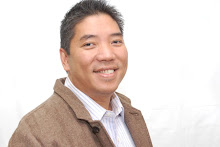By Ambeth Ocampo
Philippine Daily Inquirer
First Posted 00:23:00 10/22/2008
Most Read
After the semestral school break, I should really take the time to return to the University of the Philippines Main Library in Diliman, Quezon City, to take notes on the rest of the pseudonyms listed on those yellowing pieces of newsprint in that forgotten drawer of useless information. The list is only useful to literary historians, and I do wonder who was the strange bird who compiled all this data and for what purpose? Has the research been discontinued or is there someone still compiling pseudonyms, nicknames and pen names, bringing everything (e.g., “Jose Velarde” and “Garci”) up to date?
In recent political history, one only has to look at media to see how airtime and column inches were saved by compressing: Corazon C. Aquino into “Cory” and Joseph Ejercito Estrada into “Erap.” Fidel Valdez Ramos is “Eddie” to friends, “Tabako” to those fixated on the unlit personalized cigars he would chew on, and “FVR” to the media. It is also significant that Cory and Erap were referred to in the familiar, while others were known by their initials. One oddity though was that while Ferdinand Marcos was referred to as “FM,” his wife Imelda was never referred to as “IRM,” the initials in her personalized license plates; rather she was simply “FL,” for “First Lady,” in the same way that Jose Miguel Arroyo, the current First Gentleman, is referred to as “FG.” President Estrada’s spouse was simply “Loi,” and Ramos’ spouse was just “Ming.” I will leave the political analysis on names and naming to Randy David and the anthropological analysis to Mike Tan, but someone should really look into all this someday because it may reveal something about us as a people.
Gloria Macapagal-Arroyo is definitely a mouthful, so this has been shortened to “GMA.” Unfortunately, those initials can also stand for “Greater Manila Area,” long before Marcos-era technocrats coined the word Metropolitan or Metro Manila. GMA, depending on the context, can either mean the President or it can be mistaken as the television network GMA7. To avoid this confusion and instill some respect in government, employees (who should not address the President in the first person) have transformed “GMA” into the formal “PGMA” (for President Gloria Macapagal-Arroyo). The added “P” is for the dullards who don’t know or don’t recognize her as president.
With regard to signatures, those familiar with documents emanating from Malacañang know that the President usually signs important papers with her full name. There are some documents signed only with her married name—“Gloria Arroyo”—and, if in a hurry, with the simple initial “Gma.” (Note the distinct capital “G” and the lower case for the surnames.) In rare moments, the President make a letter more personal with the familiar “Gloria.” Naturally, no document signed by the President is official and binding unless it is attested to and countersigned by Executive Secretary Eduardo Ermita, with his now familiar scrawl under the words “By the President.” This may partly explain why executive secretaries—from Jorge Vargas under Manuel Quezon to Ermita under Arroyo—are referred to as the “Little President.” All these are small details, trivial to most, but they must be significant in some way.
Going back to the University of the Philippines’ list of pseudonyms — Jesus Balmori, a writer and poet in Spanish, used the pseudonym “Baticuling,” a type of wood; Jose Corazon de Jesus was either “Bato,” “Batute,” or “Huseng Batute”; Antonio Luna, who was of Ilocano ancestry but was born in Binondo, Manila, close to the Pasig River, used “Taga-ilog,” which, when further contracted, becomes “Tagalog.”
Others played on their initials, like the bibliographer Gabriel A. Bernardo who was simply “B.A.G,” “Gab” or “Bargeli Barderon.” Claro M. Recto was a poet before he became a senator, nationalist icon, and street name, so he signed himself “Clovis Ronsard.” Kapampangan playright Juan Crisostomo Soto was simply “Crissot,” and his plays became a genre known in literature as “Crissotan.”
Some writers actually make the trouble to make allusions to earlier and greater literature hence the poet Cecilio Apostol used “Catulo,” “Calipso” and “Calypso.” Felipe Calderon took names from Rizal’s novels and signed as “Simoun” or “Elias.” Marcelo H. del Pilar had a number of names: “Carmelo,” “O. Crame,” “D.M. Calero,” “Hilario,” “Kupang,” and “M. Dati.” Jose Ma. Sison is now known as “Amado Guerrero,” the byline appearing in the book “Philippine Society and Revolution.” I asked him to autograph my little red book, and he signed it “Jose Ma. Sison” — with a star as a flourish at the end. I asked why he chose the pseudonym Amado Guerrero, and he chuckled: “It means ‘Beloved Warrior.’” He then added that he was not as conceited as someone else in the movement who used the name “Salvador del Mundo” (Savior of the World).
Come to think of it, the hard-hitting prewar newspaper columnist Amando Dayrit used the pseudonym “Cyclops,” which could mean the monster in Greek mythology or that he was the one-eyed man in the kingdom of the blind.
Virgilio S. Almario is the name used by the dean of the University of the Philippines College of Arts and Letters when he signs official papers, but when the muse takes hold of his pen he becomes “Rio Alma” (River Soul).
What possessed Diosdado Macapagal, the Philippine president who was a poet earlier in life, to take the name “Dandelion”?
What is in a pen name or pseudonym? A lot.
* * *
Comments are welcome at aocampo@ateneo.edu.
Tuesday, October 21, 2008
Subscribe to:
Post Comments (Atom)

No comments:
Post a Comment